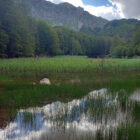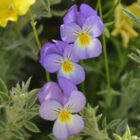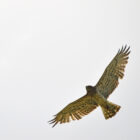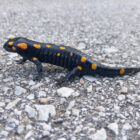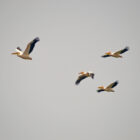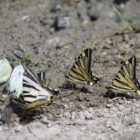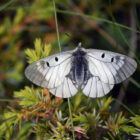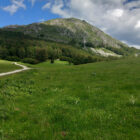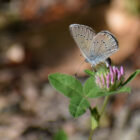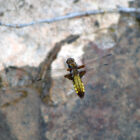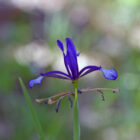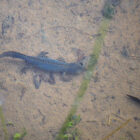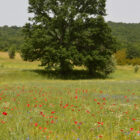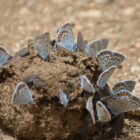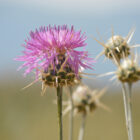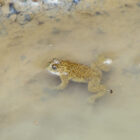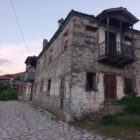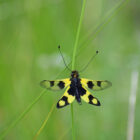Dates & Prices |
BOOK HOLIDAY NOW |
Dates: 3rd – 11th June 2026
Price: £1,795 places available
Single Room Supplement: £175
Deposit: £150 per person
Price Includes: All meal, accommodation, ground transport, services of guides & holiday report
Not Included: Flights, travel insurance, drinks and any other personal items.
Conservation Donation: 10% of profits donated to Botanical Society of Britain & Ireland (BSBI)
Leader: Sotiris Alexiou & second leader for a large group
Group Size & Travel: Minimum of 3 and a maximum of 8 guests plus 1-2 leaders
Grade: Gentle pace and generally easy walks in a variety of terrains
Holiday Highlights
- Escape to a beautiful and tranquil corner of north Greece; surrounded by water, steeped in nature & history
- A wealth of diverse habitats, including reed beds, wet meadows, ancient juniper woods, beech and oak forests, grasslands & alpine meadows
- 172 of Greece’s 234 species of butterflies can be found here & we hope to see a good range during our trip
- 270 species of birds in the Prespa National Park, including Dalmatian and white pelicans, bee-eaters, golden orioles, short-toed eagles and barred warblers
- Rich plantlife. Over 1,500 are found in this place where Mediterranean and alpine environments meet
- Beautiful Byzantine monuments, from a 10th century basilica to a 15th century hermitage in the cliffs above the lakes
- Small group tour & led by a local English speaking Greek naturalist, for the best wildlife encounters & holiday experience
An exciting tour of Prespa Lakes & Grammos Mountain: Greece’s Wild Northwest Frontier!
Straddling the borders of Greece, Albania and the North Macedonia, the Prespa Lakes are one of the most unique and bio-diverse places in all of Europe. The two lakes – Great and Lesser Prespa – are encircled by high mountains, and the basin hosts a remarkable range of habitats for the many species we’ll see during our time in northern Greece. Prespa National Park is part of the first transboundary protected area in the Balkans, It was established on 2nd February 2000, World Wetlands Day. The home of the largest colony in the world of the threatened Dalmatian pelican, hosting around 1,400 pairs, Prespa is renowned for its water birds – including seven species of heron, white pelicans and a rare colony of pygmy cormorants. But what makes the lake region so magical is the rich mingling of nature and culture. An extraordinary variety of bird, butterfly, wildflower and mammal species live side by side with centuries-old Byzantine churches and hermitages, and stunning views over the lakes and mountains are complemented by traditional and welcoming stone villages. It’s a mesmeric place that will linger with you long after leaving. We will be staying in the village of Agios Germanos, a few kilometres from the lakes. It is the only village in the Prespes region that has preserved all of the old stone houses, including the traditional style hotel where we will be based. The Byzantine church at the heart of the present village dates to the beginning of the 11th century and features very interesting frescos. Through a combination of walking, driving and a boat trip, we’ll explore a karstic plateau, ancient juniper woods, a 13th century hermitage in the lake cliffs, and open grasslands and wet meadows, among many other landscapes and habitats. We will also take time to visit the island on Little Prespa Lake. As well as the beautiful ruins of a 10th century basilica, the island is encircled by reed beds where herons, egrets, pelicans and water rails nest. There’ll be plenty of time to just sit and soak up the magical atmosphere of the mountains and lakes as well, to quietly enjoy this marvellous place at the very end of Greece. Of Prespa’s rich birdlife, we hope to see Dalmatian and White Pelican, Short-toed Eagle, Bee-eater, Barred Warbler, Woodchat and Red-backed Shrike, Penduline and Sombre Tit, Bearded Reedling, Golden Eagle, Woodlark, Ortolan Bunting, Rock Thrush, Golden Oriole, Squacco Heron, Little Bittern, Middle-spotted Woodpecker, Black-headed Bunting, Black-eared Wheatear, Honey Buzzard and Levant Sparrowhawk, among many others. Prespa is also the perfect place for butterfly lovers, hosting 172 of Greece’s 234 species. Some of those we’ll be looking for during the week include Clouded Apollo, Nettle-tree Butterfly, Eastern and Southern Festoon, Scarce and Common Swallowtails, Eastern Bath White, Queen of Spain Fritillary, Freyer’s Purple Emperor, Woodland Grayling, Lattice Brown, Balkan Marbled White, Camberwell Beauty and Southern White Admiral. We will of course take time to enjoy a host of interesting and beautiful plants during our time in the area. This will include orchids, including Cephalanthera damassonium, Cephalanthera longifolia, Dactylorhiza cordigera, Epipactis helleborine, Himantoglossum jankae, Ophrys zeusii, Orchis purpurea, Platanthera bifolia, and Platanthera chlorantha. Other notable plants include Aquilegia vulgaris, Alkanna pindicola, Anthyllis aurea, Campanula glomerata, Campanula sparsa, Centaurea adamii, Centaurea finazzeri , Centaurea graeca, Centaurea spruneri, Goniolimon tataricum, Gymnadenia conopsea, Iris sintenisii, Lactuca intricate, Lilium candidum, Onosma heterophylla, Quercus trojana, Scutellaria columnae, Tephroseris integrifolia, Viola orphanidis, and Viola velutina. We will also head further west during our tour, to explore Mount Grammos, which straddles the border between Greece and Albania and geographically speaking is part of the north Pindos mountain range. It is the 4th highest mountain in Greece, peaking at 5,520m. This wild and beautiful place is characterized by alpine meadows and lakes, lush beech and conifer forests. The Aliakmonas River (Greece’s longest river) also crosses its gorges and slopes. We will enjoy a variety of flora and fauna during our time here and due to the wilderness of this place there is a chance of seeing bears and wolves, though most likely is to find signs of their presence rather than actual sightings – but you never know! We may also be lucky to see some of the areas important birds, such as Golden Eagle, Rufous-tailed Rock-thrush, and Tawny Pipit. We will also look out for Fire Salamanders and Alpine Newts, which can both be found here. These are just a few of the many memorable wildlife moments awaiting us in what promises to be a fascinating and inspiring time in one of the least visited corners of Greece!
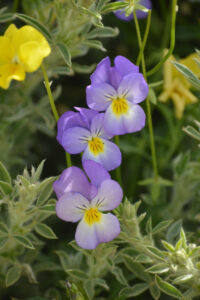
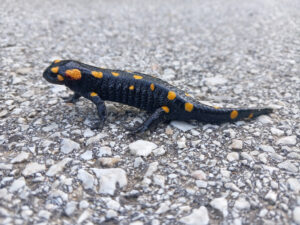
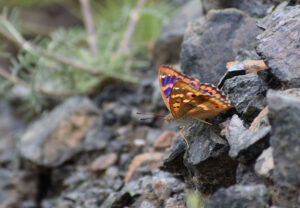
Day 1. Arrival and meet in Thessaloniki airport and transfer to our base in Prespa
Day 2. Exploration of the area of Vrontero on the western side of the Little Prespa Lake (Mikri Prespa)
Day 3. Exploration of the slopes of Mt. Varnoundas (also called Peristeri)
Day 4. Village Psarades and aboat trip on the Great Lake (Megali Prespa)
Day 5. Visit via the floating wooden bridge to the beautiful Agios Achillios island on Little Prespa Lake, plus exploration of the village area of Agios Germanos, including the river and the riparian forest.
Day 6. Exploration of Mt. Triklario and its peak (Mali-Madhi) located to the south of Little Prespa Lake
Day 7. Visit to Kastoria, on the western shore of Lake Orestiad, then transfer to Mt. Grammos
Day 8. Exploration of Mt. Grammos
Day 9. Transfer to Thessaloniki airport for return flights or to overnight if your flight is the next day or you wish to extend your stay in Thessaloniki
Will be added in due course
To follow


